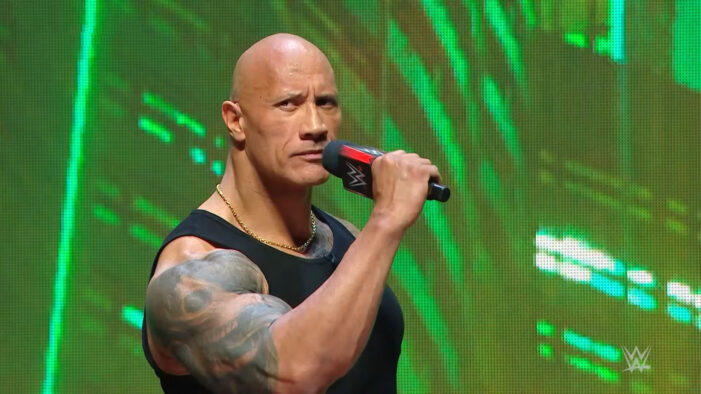Beyond the glitz and glamor of the squared circle lies the financial reality of the Superstars who entertain us. WWE wrestlers’ earnings are a topic of much curiosity and speculation among fans and observers alike.
The World Wrestling Entertainment (WWE) universe is not just a spectacle of athleticism and storytelling but also a lucrative career path for its performers. The financial compensation of WWE Superstars is a topic of much fascination and speculation among fans.
WWE contracts, far from being straightforward, encompass various revenue streams beyond just a base salary. Contracts are a combination of base salaries, bonuses, merchandise sales, and more.
Key Takeaways
- Complex Contractual Structure: WWE wrestler earnings aren’t solely based on a fixed salary but encompass various revenue streams such as downside guarantees, merchandise sales, pay-per-view bonuses, and additional revenue sources like video game royalties and personal appearances.
- Top Earners: Superstars like Brock Lesnar, John Cena, and Roman Reigns command substantial incomes, with Lesnar reportedly topping the list with an annual income of $12 million, followed closely by Cena with $8.5 million and Reigns with $5 million.
- Gender Pay Equity: Becky Lynch’s position as the highest-paid female wrestler signifies WWE’s commitment to gender pay equity, reflecting the evolution of women’s wrestling within the company and the growing significance of top female stars like Lynch.
- Financial Progression: Wrestlers’ journey from the minimum base salary to becoming top earners is marked by factors like performance, fan engagement, and storyline involvement.
The Structure of WWE Salaries
WWE contracts are multifaceted, offering wrestlers a base salary along with bonuses for pay-per-view appearances, merchandise sales, and other revenue streams:
- Downside Guarantee – foundational aspect of WWE contracts, acting as a safety net for wrestlers. This guarantee ensures that a wrestler will earn a minimum amount annually, which can be seen as a base salary. For example, a new wrestler on the main roster might have a downside guarantee of $250,000.
- Merchandise sales – a portion of the revenue from merchandise sales (such as t-shirts, action figures, and other branded items) is shared with the wrestlers featured on the merchandise. For top stars like Roman Reigns or Becky Lynch, this can result in substantial additional income.
- Pay-per-view events – major revenue generators. Bonuses in those events can vary greatly depending on the wrestler’s placement on the card and the significance of the event. For example, headlining a major pay-per-view like WrestleMania or SummerSlam can result in a six-figure bonus for the involved wrestlers. Brock Lesnar may negotiate bonuses exceeding $500,000 for a single main event appearance.
- Additional Revenue Streams – other revenues, such as video game royalties or personal appearances. For instance, a popular wrestler might be paid tens of thousands of dollars for a few hours at a meet-and-greet event or a convention appearance.

Top Earners in WWE
Brock Lesnar, known as “The Beast Incarnate,” stands atop the WWE salary pyramid with a reported annual income of $12 million. His contract includes hefty bonuses for main event appearances and a significant share of merchandise sales.
Lesnar’s contract is unique due to his part-time status, allowing him to earn substantial bonuses for fewer appearances. His ability to command a high price is a testament to his marketability and the value WWE places on his appearances, which often result in increased viewership and ticket sales.
Close behind is John Cena, a part-time performer with a yearly take-home of $8.5 million, bolstered by $500,000 per main event appearance and a 5% cut from his merchandise sales. John Cena has been a cornerstone of WWE for over two decades.
Even as a part-time performer, his influence and popularity continue to command a high salary. Cena’s earnings from merchandise sales are among the highest in the company, reflecting his enduring popularity.
His involvement in Hollywood has also elevated his profile, making his WWE appearances special attractions that justify his high pay-per-view bonuses.
Roman Reigns, the “Tribal Chief,” earns around $5 million annually, making him one of the highest-paid full-time wrestlers. Reigns’ merchandise sales are consistently high, and his presence at live events and pay-per-views is a major draw for fans, contributing significantly to his overall compensation.
Other top earners include Randy Orton ($4.5 million), Seth Rollins ($3.5 million), and Becky Lynch, the highest-paid female wrestler, with an annual salary of $3 million.
Randy Orton and Seth Rollins are examples of wrestlers who have maintained top positions within WWE for an extended period. Their salaries reflect their contributions to the company, both in the ring and as ambassadors of the WWE brand.
Becky Lynch’s position as the highest-paid female wrestler in WWE is a landmark achievement, reflecting the evolution of women’s wrestling within the company. Her salary and bonuses are indicative of WWE’s investment in women’s wrestling and the drawing power of its top female stars.
The table below showcases the top salaries in WWE:
| Wrestler | Annual Salary |
|---|---|
| Brock Lesnar | $12 million |
| John Cena | $8.5 million |
| Roman Reigns | $5 million |
| Randy Orton | $4.5 million |
| Seth Rollins | $3.5 million |
| Becky Lynch | $3 million |
The Minimum Wage for WWE Wrestlers

For those at the beginning of their WWE careers or not in the main event spotlight, the financial picture is different. Triple H has revealed that WWE Superstars on the main roster have a minimum base salary of $250,000.
This figure is just the starting point for wrestlers on the main roster, providing them with financial security as they work to establish themselves within the company.
Wrestlers moving up from NXT to the main roster start with the minimum base salary but often see their earnings increase as they become integral parts of Raw or SmackDown. Their development and positioning within the company play a crucial role in their financial progression.
The journey from earning the minimum base salary to becoming one of WWE’s top earners is marked by performance, fan engagement, and the ability to connect with the audience both in and out of the ring.
Wrestlers like Liv Morgan and Apollo Crews, who have shown significant fan engagement and have been involved in key storylines, can see their earnings increase beyond the base salary through merchandise sales and performance bonuses.
WWE provides multiple platforms and opportunities for its Superstars to increase their earnings, emphasizing the importance of personal branding, merchandise appeal, and storyline involvement.
FAQs
Who is the richest WWE wrestler?
The richest WWE wrestler is Dwayne “The Rock” Johnson. With his successful transition from wrestling to Hollywood, he has amassed a fortune estimated at over $320 million, making him one of the wealthiest personalities in the entertainment industry.
How much do WWE women make?
The earnings of WWE women vary depending on their popularity, tenure, and marketability. While specific figures aren’t publicly disclosed, top female wrestlers like Becky Lynch and Charlotte Flair reportedly earn salaries comparable to their male counterparts, reflecting WWE’s commitment to gender equality in compensation.
How much is WWE worth?
WWE is worth over $7 billion. This valuation encompasses various revenue streams, including television rights deals, live events, merchandise sales, and digital media, solidifying WWE’s status as a global entertainment powerhouse.
Who is the owner of WWE?
WWE is publicly traded, and its chairman and CEO is Vince McMahon. McMahon, a pioneering figure in professional wrestling, has been at the helm of WWE since its transformation from a regional promotion to a global phenomenon.
Conclusion
The financial rewards of being a WWE Superstar can be substantial, particularly for top performers who captivate audiences worldwide. While the base salary provides a stable income, bonuses and merchandise sales offer the potential for significant additional earnings.
From the astronomical earnings of top-tier talents like Brock Lesnar and John Cena to the foundational support provided to newcomers with a minimum base salary, WWE’s compensation structure is designed to reward the hard work, dedication, and marketability of its wrestlers.
Dynamic pay structure not only ensures financial security for the wrestlers but also incentivizes them to elevate their performance, engage with fans, and contribute to the ongoing success of WWE.
As the industry continues to evolve, so too will the mechanisms by which wrestlers earn their keep, ensuring that talent, dedication, and audience connection remain paramount in determining financial success within the squared circle.
If you’re in the mood for a good laugh check out the article on WWE wardrobe malfunction moments. Sit back and enjoy!

